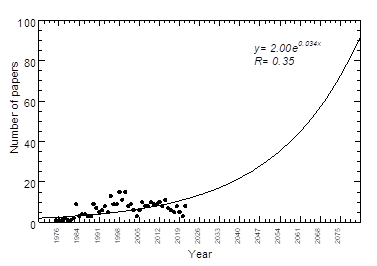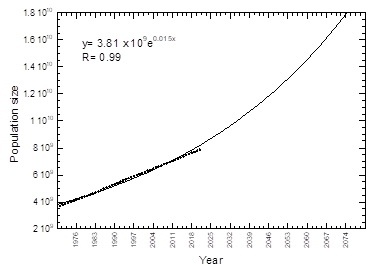International Journal of
eISSN: 2576-4454


Opinion Volume 6 Issue 1
Department of Biology, Faculty of Science, Universiti Putra Malaysia, Malaysia
Correspondence: Chee Kong Yap, Department of Biology, Faculty of Science, Universiti Putra Malaysia, 43400 UPM Serdang, Selangor, Malaysia
Received: January 18, 2022 | Published: January 26, 2022
Citation: Yap CK, Syazwan WM. Mussel Watch monitoring program: a practical monitoring tool of potentially toxic metals pollution from 1970 to beyond 2070. Int J Hydro. 2022;6(1):20-21. DOI: 10.15406/ijh.2022.06.00298
The Mussel Watch monitoring program (MWMP) has been extensively implemented to monitor the health of worldwide coastal ecosystems since first introduced during the mid-1970s.1 This initiative promotes the use of sentinel, filter-feeding mussels as a reliable and proportionate biomonitor for the changes of organic and inorganic pollutants occurring in the seawater, food or sediment.2,3
As demonstrated by the majority of monitoring studies undertaken by the MWMP, analysis of the total soft tissues in mussels has proven useful in assessing the level of bioavailable contaminants including the potentially toxic metals (PTMs).4–6 In some cases, however, the total soft tissues of mussels could hardly reflect the bioavailabilities of PTMs in the ambient seawater, thus making an accurate determination of contamination levels very difficult.6,7 Nevertheless, another biomonitoring study using various parts of mussel tissues has yielded a higher accuracy that better reflects the pollution levels in coastal waters.8 Such a study has indeed provided some level of certainty of better and more extensive applications of mussels in environmental monitoring in the future, although more studies are urgently needed.6
In Malaysia, the MWMP related studies are relatively limited until Yap et al.9 reported the levels of four PTMs in Perna viridis from the coastal waters of Peninsular Malaysia. MWMP research in Malaysia have been progressive ever since, as exemplified by the growing numbers of reviews and updates pertaining to the MWMP in recent years.2
A more recent online literature search (as of 1 December 2021) using the keyword ‘Mussel Watch’ on the Scopus database has yielded a total of 304 publications recorded from more than 52 countries during 1975 – 2021. The increasing pattern of worldwide publications related to ‘Mussel Watch’ throughout the years is also evident (Figure 1, as plotted using the KaleidaGraph Version 3.08 Sygnergy Software, Eden Prairie, MN, USA). Subsequent analysis based on the exponential regression model as the fit type in KaleidaGraph (Figure 1) has further projected an exponential increase in the numbers of papers to be published beyond the 2070s. In fact, such an increasing trend appears to be in tandem with the predicted increasing size of the world’s population (Figure 2).

Figure 1 Predictive model of increasing numbers of papers to be published beyond the 2070s, based on exponential regression model as the fit type in KaleidaGraph. Data in black dots were cited from Scopus database from 1975 until 2021 on the number of global literature with the keyword of ‘Mussel Watch’ (as searched on 1 December 2021; N= 304).

Figure 2 Predictive model of increasing world population size from 1970 to beyond the 2070s, based on exponential regression model as the fit type in KaleidaGraph. Data in black dots were cited from Our World in Data.12
It is therefore beyond any reasonable doubt that with all the reported studies using mussels as biomonitors of PTMs pollution, the effectiveness of using MWMP is almost certain and with high practicality. This note also clearly indicates that MWMP serves great potential as a feasible and practical environmental monitoring tool that may help to promote the marine ecosystem’s health and coastal livelihood in the future.
The knowledge gaps in biomonitoring studies thus need to be urgently filled by working towards overcoming the recurring challenges in the development of more accurate methodologies for PTMs data interpretation. Further works to increase the precision of the biomonitoring studies using bivalves as biomonitors, whether in coastal or freshwater ecosystems also should be conducted. Relatedly, the inclusion of human health risk assessment of PTMs in commercial mussels would certainly make the research findings of high public interest and especially important to the authorities and policy makers.10,11
None.
The author declares there is no conflict of interest.

©2022 Yap, et al. This is an open access article distributed under the terms of the, which permits unrestricted use, distribution, and build upon your work non-commercially.